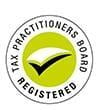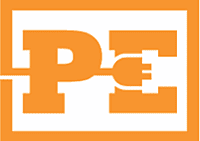Interest Expenses On Rental Properties Guide
Interest expenses
If you take out a loan to purchase a rental property, you can claim a deduction for the interest charged on the loan or a portion of the interest. However, the property must be rented out or genuinely available for rent in the income year you claim a deduction.
What you can claim
You can claim the interest charged on the loan you used to:
- purchase a rental property
- purchase a depreciating asset for the rental property (for example, to purchase an air conditioner for the rental property)
- make repairs to the rental property (for example, roof repairs due to storm damage)
- finance renovations on the rental property, which is currently rented out, or which you intend to rent out (for example, to add a deck to the rear of the rental property)
You can also claim interest you have pre-paid up to 12 months in advance.
What you can't claim
You can't claim a deduction for interest expenses you incur:
- for any period you used the property for private purposes, even if it's a short period of time
- on the portion of the loan you use for private purposes either when you took out the loan or if you refinanced (for example, money you use to purchase a new car or invest in a super fund)
- on a loan you used to buy a new home if you don't use the new home to produce income, even if you use your rental property as security for the loan
- on any portion of the loan you use for private purposes, even if you are ahead in your repayments.
Example: Claiming all interest incurred
Kosta and Jenny take out an investment loan for $350,000 to purchase an apartment they hold as joint tenants.
They rent out the property for the whole of the year from 1 July. They incur interest of $30,000 for the year.
Kosta and Jenny can each make an interest claim of $15,000 on their respective tax returns for the first year of the property.
End of example
Example: Claiming part of the interest incurred
Yoko takes out a loan of $400,000 from which $380,000 is to be used to buy a rental property and $20,000 is to be used to buy a new car.
Yoko's property is rented for the whole year from 1 July. Her total interest expense on the $400,000 loan is $35,000.
To work out how much interest she can claim as a tax deduction, Yoko must do the following calculation:
Total interest expenses × (rental property loan ÷ total borrowings) = deductible interest
$35,000 × ($380,000 ÷ $400,000) = $33,250
Yoko can claim $33,250 as an allowable deduction.
End of exampleLoan accounts used for private and rental expenses
If you have a loan account that has a fluctuating balance due to a variety of deposits and withdrawals and is used for both private purposes and rental property expenses, you must keep accurate records to enable you to calculate the interest that applies to the rental property portion of the loan. You can't repay only the portion of the loan that relates to the personal purchase. Any repayments of the loan are apportioned across both purposes.
You must also separate the interest that relates to the rental property from any interest that relates to the private use of the fund.
For apportionment calculations in these situations, see paragraphs 19 and 20 of TR 2000/2 – Income tax: deductibility of interest on moneys drawn down under line of credit facilities and redraw facilities.
Example: Interest incurred on a mortgage for a new home
Zac and Lucy take out a $400,000 loan secured against their existing home to purchase a new home.
Rather than sell their existing home, they decide to rent it out.
They have a mortgage of $25,000 remaining on their existing home which is added to the $400,000 loan under a loan facility with sub-accounts – that is, the two loans are managed separately but are secured by the one property.
Zac and Lucy can claim an interest deduction against the $25,000 loan for their original home, as it is now rented out.
They can't claim an interest deduction against the $400,000 loan used to purchase their new home as it's not being used to produce income even though the loan is secured against their rental property.
End of example
Example: Interest incurred on fund redrawn from the loan halfway through the year
Tyler has an investment loan for his rental property with a redraw facility. He is ahead on his repayments by $9,500 which he can redraw. Halfway through the year, Tyler redraws the available amount of $9,500 and buys himself a new TV and a lounge suite.
The outstanding balance of the loan after the redraw increases to $365,000 and total interest expense incurred immediately before the redraw is $9,300. The total interest on $365,000 for the year is $19,000.
Tyler can only claim the interest expense on the portion of the loan relating to the rental property using the following calculations:
Total loan balance − redraw amount = rental property loan portion
$365,000 − $9,500 = $355,500
To work out how much interest he can claim, he does the following calculation in respect of the period following the redraw:
Total interest expenses × (rental property loan portion ÷ loan balance at the time of the redraw) = deductible interest
$9,700 × ($355,500 ÷ $365,000) = $9,448
Tyler can claim interest of $18,748, being $9,300 plus $9,448.


































